39 Tasty Fruit Liqueurs Everyone Can Enjoy
Fruit liqueurs burst with vibrant, sweet flavors that transform ordinary drinks into extraordinary experiences.
These delightful spirits capture the essence of ripe, juicy produce through carefully crafted infusion techniques.
Bartenders and home mixologists adore these versatile beverages for their ability to elevate cocktails and desserts.
Rich, concentrated fruit essences create complex layers of taste that dance across your palate.
Each liqueur tells a unique story of cultural traditions and artisanal craftsmanship passed down through generations.
Sophisticated yet approachable, these alcoholic elixirs blend natural ingredients with carefully balanced sugar content.
Global distilleries compete to produce the most innovative and memorable fruit-based libations.
You can sample these 35 popular fruit liqueurs that will revolutionize your drinking experience:
Which Fruit Liqueur Types in the World Stand Out Most?
Around the globe, fruit liqueurs offer sweet, aromatic bursts, perfect for sipping or mixing. Discover which types are must-tries for cocktail fans and dessert lovers alike.
Umeshu
Umeshu is a traditional Japanese liqueur renowned for its complex sweet-sour profile derived from steeping ume plums in alcohol and sugar.
Japanese households and distilleries craft this distinctive beverage by macerating ripe or green ume plums in shochu or neutral spirits with rock sugar.
Fermenting creates a bittersweet liqueur with an intense fruity fragrance that ranges from golden to amber in color.
Home brewers and commercial producers often experiment with alternative sweeteners like honey or black sugar to enhance the drink's depth.
Variations might include additional flavor infusions that complement the plum's natural essence.
Bartenders and drinkers enjoy umeshu in multiple serving styles, from neat pours to refreshing mixed drinks.
Summer gatherings frequently feature this smooth liqueur served chilled or over ice.
Regions across Japan take pride in their unique umeshu recipes, reflecting local agricultural traditions and brewing techniques.
Ginjinha
Ginjinha showcases Portugal's rich liqueur tradition through a ruby red sour cherry spirit distilled from fresh natural ingredients by Cistercian monks' ancient recipes.
Sweet and aromatic, this classic Portuguese drink bursts with intense cherry flavors that dance across the palate.
Originating in Obidos and Alcobaca, ginjinha quickly spread throughout Portugal and became especially beloved in Lisbon and Algarve regions.
Locals typically enjoy the liqueur as a smooth aperitif or digestif, serving it neat in small shot cups.
Drinking options include enjoying the spirit with or without the alcohol-soaked cherry garnish.
Versatile bartenders also incorporate ginjinha into creative cocktail recipes.
Small local taverns and bars across Portugal proudly feature this traditional spirit.
Tourists and residents savor ginjinha as a genuine taste of Portuguese liquid culture.
Limoncello
Limoncello is a zesty Italian liqueur celebrated for its bright yellow hue and intense citrus flavor, originating from the sun-drenched coastal regions of Sorrento, Amalfi Coast, and Capri.
This refreshing spirit emerges from carefully infusing lemon zest in neutral alcohol, then blending with sugar and water through a meticulous filtering process.
Traditionally served well-chilled in frosty glasses, limoncello functions as both an aperitif and digestif, delighting palates with its sweet and aromatic profile.
Bartenders frequently incorporate this versatile liqueur into creative cocktails and long drinks, expanding its culinary potential.
Southern Italian families have long cherished this beverage as a cherished recipe passed through generations.
First officially patented in 1988, limoncello quickly became a regional specialty that captured international attention.
Restaurants and bars worldwide now feature this iconic Italian liqueur, showcasing its crisp, citrusy essence.
Grand Marnier
Grand Marnier is a legendary French liqueur blending aged cognacs with intense bitter orange essence, crafted by Louis Alexandre Marnier Lapostolle in 1880.
Sophisticated drinkers savor its complex flavor profile created through meticulous slow aging in French oak casks.
Crepes Suzette famously feature this distinctive orange-cognac liqueur as a signature ingredient in French cuisine.
Mixologists worldwide incorporate Grand Marnier into classic cocktails and innovative drink recipes.
Two primary versions exist: the original Cordon Rouge with rich cognac base and Cordon Jaune made from neutral grain spirits.
Bartenders prize its versatility in both alcoholic beverages and gourmet desserts.
Fine restaurants recommend enjoying it neat or chilled to experience its nuanced orange-cognac character.
Connoisseurs consider Grand Marnier a premium liqueur representing French distilling excellence.
Cointreau
Cointreau is a premium orange liqueur distinguished by its unique distillation process using sweet and bitter orange peels, creating an intensely concentrated flavor profile.
Founded by the Cointreau brothers in France, this iconic triple sec brand first registered its trademark in 1885 and quickly became a global standard in liqueur production.
Master distillers carefully extract essential oils from orange peels to produce a balanced, slightly sweet spirit with remarkable clarity and depth.
Bartenders worldwide rely on Cointreau as a crucial ingredient in classic cocktails like Margaritas, Sidecars, and Cosmopolitans.
Professional mixologists prize the liqueur for its crisp, clean taste and versatility in drink recipes.
European spirits enthusiasts recognize Cointreau as a benchmark for quality orange liqueurs.
International bars and restaurants consistently stock this premium spirit for its consistent flavor and professional-grade quality.
Generations of drinkers have celebrated Cointreau's sophisticated orange essence and smooth drinking experience.
Aperol
Aperol is a beloved Italian liqueur from Padua that captivates drinkers with its unique blend of bitter, fruity, and floral flavors.
Invented in 1919 by the Barbieri brothers, this vibrant orange-hued spirit boasts a low 11% alcohol content and an original secret infusion of bitter and sweet oranges, rhubarb, and herbs.
Its versatility shines through various serving styles, from enjoying it over ice to mixing it in cocktails.
Aperol Spritz has become the drink's most famous preparation, combining Aperol, Prosecco, and a splash of soda water.
Bartenders and home mixologists embrace this light, refreshing aperitif.
Mediterranean social gatherings frequently feature the cocktail as a pre-dinner drink.
Summer parties and Italian-themed events often showcase Aperol's distinctive taste.
Millions of global consumers have fallen in love with this iconic Italian beverage.
Maraschino
Maraschino is a clear cherry liqueur steeped in Croatian heritage, crafted by Dominican monks in Zadar during the 16th century from fragrant Marasca cherries.
Francesco Drioli pioneered its commercial production in the 18th century while Dalmatia remained under Venetian rule.
The liqueur's unique flavor profile emerges from using entire cherries, including their pits, which contribute an intense aroma and subtle bitter undertone.
Political shifts dramatically impacted its production, with manufacturing halting mid-20th century before the Yugoslav government consolidated operations under the Maraska enterprise.
Distillers carefully extract the liqueur's complex essence through meticulous techniques passed down through generations.
European bartenders prize Maraschino for its sophisticated flavor in classic cocktails.
Typically served chilled or used in mixed drinks, the liqueur remains a cherished Croatian culinary export.
Its rich history continues to fascinate spirits enthusiasts worldwide.
Triple Sec
Triple sec represents a classic French orange liqueur distilled from dried orange peels and neutral spirits.
French distilleries like Combier and Cointreau pioneered this clear, aromatic alcohol in the 1830s.
Saumur's Combier claims creating the first version in 1834, while Cointreau disputes this origin.
Traditional production involves macerating orange peels to extract intense citrus flavors.
Alcohol content typically ranges between 20-40% proof.
Multiple cocktail recipes feature triple sec as a key ingredient.
Bartenders worldwide use it to add bright citrus notes to mixed drinks.
Mixing triple sec creates complex flavor profiles in classic beverages like margaritas and cosmopolitans.
Licor 43
Licor 43 is a golden-hued Spanish liqueur steeped in family tradition and mysterious origins, crafted with an exact blend of forty-three secret ingredients.
Diego Zamora and his family developed this smooth spirit in the 1940s, drawing inspiration from an ancient elixir called liqvor mirabilis.
Vanilla, citrus, and spice notes dance through its dense liquid, creating a complex sensory experience.
Distillers carefully age and filter the liqueur to achieve its signature golden color and silky texture.
Bartenders frequently mix Licor 43 into creative cocktails, expanding its versatile appeal.
Spaniards typically enjoy this drink well-chilled and served over ice as a sophisticated digestif.
Its unique production method remains a closely guarded family secret passed through generations.
International spirits enthusiasts have embraced Licor 43 as a distinctive and intriguing beverage with deep cultural roots.
Midori
Midori is a signature Japanese melon liqueur renowned for its vivid emerald color and sweet melon essence.
Crafted from premium yubari and musk melons sourced exclusively in Japan, this distinctive spirit blends a clear base with sugar and brandy to create a uniquely refreshing drink.
Suntory introduced the liqueur in 1964 under its original name, Hermes Melon Liqueur, before rebranding to Midori in 1978.
Studio 54's legendary launch in New York catapulted the liqueur to international fame, making it a popular cocktail ingredient worldwide.
Bartenders frequently use Midori in mixed drinks like the Midori Sour and Japanese Slipper.
Its bright green hue and smooth sweetness make it instantly recognizable among liqueur enthusiasts.
The name Midori translates directly to "green" in Japanese, reflecting its signature color.
Picon
Picon is a legendary French bitter liqueur invented by Gaetan Picon as a medicinal solution for malaria-stricken soldiers in Algeria during the 1930s.
Crafted from neutral alcohol, caramel, orange zest, gentian root, and cinchona bark, this bittersweet orange-flavored spirit offers a complex herbal profile with quinine undertones.
Picon quickly gained recognition after winning a bronze medal at the 1862 London World's Fair, which prompted Picon's relocation to Marseille for production.
Belgian beer enthusiasts particularly enjoy mixing Picon with white wine or beer in the French-speaking regions.
French soldiers originally discovered its potential as a malaria treatment while stationed in North Africa.
Gaetan Picon's innovative distillery background enabled him to develop this unique liqueur.
Belgian drinking culture embraced the spirit, creating signature cocktail combinations.
Blue Curacao
Blue Curacao liqueur transforms ordinary cocktails with its striking azure color and distinctive orange flavor derived from Laraha oranges native to Curacao island.
Distillers artificially enhance the originally clear spirit with vivid blue coloring to create its signature visual appeal.
Manufacturers worldwide produce this liqueur, though not all strictly adhere to traditional island production methods.
Multiple brands compete in the global market, each offering slight variations in taste and intensity.
Bartenders frequently use Blue Curacao as a key ingredient in tropical and tiki-style mixed drinks.
Its sweet, citrusy profile complements rum and other spirits perfectly.
Caribbean origins contribute to its exotic reputation among beverage enthusiasts.
Cocktail recipes like the Blue Hawaiian and Blue Lagoon showcase this liqueur's versatility and visual allure.
Curacao
Curacao liqueur emerges as a vibrant Caribbean spirit distilled from dried Laraha orange peels on Curacao island.
Spanish colonizers originally imported Valencian oranges to the Caribbean in the 16th century, discovering the fruit's inability to grow successfully.
Locals eventually recognized the dried orange peels contained intense essential oils perfect for liqueur production.
Distillers transform these fragrant peels into a uniquely flavored spirit with multiple color variations including blue, orange, and clear versions.
Senior Family Liqueur Company pioneered commercial production around 1896, establishing the liqueur's global reputation.
Alcohol content typically ranges between 15-40% depending on the specific recipe and brand.
Bartenders frequently use Curacao in classic cocktails like the Blue Hawaiian and Margarita.
Mixologists consider this liqueur a staple ingredient in many tropical and tropical-inspired drink recipes.
Maesil-Ju
Maesil-ju represents a robust Korean liqueur crafted from Asian plums steeped in soju, creating a complex bitter-sweet alcoholic beverage.
Traditional Korean families prepare this potent spirit by carefully layering ripe or unripe plums with sugar in traditional glass containers.
Skilled artisans macerate the mixture for several weeks, allowing natural flavors to develop intensely.
Sugar transforms the fruit's tartness into a golden-hued liquid with nuanced taste profiles.
Alcohol content typically ranges between 14-25 percent, making it a powerful traditional drink.
Koreans serve maesil-ju chilled in small shot glasses during social gatherings.
Each batch carries unique characteristics depending on plum ripeness and sugar proportions.
Pacharan
Pacharan is a traditional Spanish sloe liqueur originating in Navarre with deep mahogany color and intense flavor profile.
Spanish regions celebrate this potent spirit made by macerating sloes in anise-flavored alcohol for several months.
Craftsmen often enhance the liqueur's complexity by adding bay leaves, roasted coffee beans, or select herbs and spices.
Ancient medieval traditions inspired its creation, reflecting rich regional culinary heritage.
Sloes provide a naturally sweet base that balances the strong anise undertones.
Alcohol content ranges between 25-30% ABV, making it a robust digestif.
Families and local producers take pride in their unique preparation methods.
Pacharan remains a beloved after-dinner drink throughout Spain.
Hesperidina
Hesperidina is a distinctive Argentine orange-based aperitif invented by American Melville Sewell Bagley in Buenos Aires during 1864.
Born from fresh orange zest and herbal notes, this unique liqueur captures Argentina's spirit with its bright, bitter orange flavor profile.
Bagley developed the drink as a refreshing alternative to traditional European spirits popular at the time.
Made through careful distillation and infusion processes, Hesperidina quickly became a beloved national beverage.
Its complex taste balances sweet and bitter orange characteristics with subtle herbal undertones.
Argentine bartenders often serve the liqueur chilled or mixed in cocktails as a signature drink.
Locals appreciate its rich historical significance and distinctive taste.
Hesperidina remains an important part of Argentina's drinking culture and culinary heritage.
Passoa
Passoa is a tangy French liqueur bursting with exotic Brazilian passion fruit flavors and a 17% alcohol content.
Crafted in 1985, this vibrant spirit delivers a unique sensory experience with its intense passion fruit aroma.
Honey sweetness perfectly balances the zesty, citrus-like undertones that dance across the palate.
Mixologists frequently incorporate Passoa into creative cocktails, making it a popular choice for those seeking a tropical twist.
Its smooth texture and bright flavor profile make it ideal for summer drinks and social gatherings.
Bartenders often use Passoa as a key ingredient in fruity mixed beverages.
The liqueur can also be enjoyed neat for those who prefer a more direct taste experience.
Passionate fruit lovers appreciate its authentic and refreshing Brazilian-inspired character.
Rinquinquin
Rinquinquin is a classic Provencal peach-infused aperitif renowned for its intense, fragrant aroma and sweet, fruity flavor profile.
Crafted with white wine and enriched by fresh peaches and peach leaves, this traditional French liqueur originates from Distilleries et Domaines de Provence.
Bartenders serve it well-chilled, offering multiple consumption options like neat, on the rocks, or mixed with tonic or sparkling water.
Its versatility extends to cocktail mixing, making it a popular choice for summer gatherings.
The drink's signature peach essence creates a refreshing and smooth drinking experience.
Carefully prepared using time-honored techniques, Rinquinquin reflects the rich culinary heritage of southern France.
Sophisticated yet approachable, this aperitif captures the essence of Provencal hospitality.
Each sip transports you to the sun-drenched orchards of the French countryside.
Mandarinetto
Mandarinetto shines as a vibrant Sicilian liqueur crafted from sun-kissed mandarin oranges harvested in Sicily's lush orchards.
Sicilian artisans carefully extract essential oils by peeling fresh mandarin skins and steeping them in neutral alcohol.
Maceration transforms the alcohol, infusing it with intense citrus essence and aromatic complexity.
Craftsmen then blend the macerated spirit with pure water and sugar, creating a balanced and smooth liqueur.
Sweet and tangy notes dance across your palate with each sip of this traditional digestif.
Generations of Sicilian families have perfected this recipe, passing down techniques through generations.
Alcohol content typically ranges between 30-40%, offering a warming yet refreshing experience.
Mandarinetto serves as a perfect end to a Mediterranean meal, embodying Sicily's rich culinary heritage.
Amaranca
Amaranca is a vibrant Sicilian orange-flavored amaro crafted from an ancestral recipe that captures the essence of Mount Etna's botanical landscape.
Artisanal distillers carefully infuse Sicilian wild orange with a complex blend of mountain herbs and roots to create this award-winning liqueur.
Its distinctive flavor profile balances subtle citrus notes with gentle herbal undertones and a nuanced bitterness.
Smooth and aromatic, Amaranca shines as both an elegant aperitif and digestif.
Connoisseurs savor this spirit chilled or over ice, often highlighting its character with a delicate orange zest or fresh mint garnish.
The liqueur's deep orange hue reflects its primary citrus ingredient, while its intricate herbal composition speaks to Sicily's rich botanical heritage.
Distilled with traditional techniques, Amaranca represents a sophisticated expression of Mediterranean spirit-making.
Fatourada
Fatourada is a zesty orange liqueur originating from Kythira, Greece, crafted from potent pomace spirit, spices, and local citrus infusions.
Rooted in 14th-century island traditions, wealthy families pioneered this distinctive beverage with complex flavor profiles.
Subtle bitterness defines its aromatic character, blending citrusy and dried fruit notes with warm spice undertones.
Greeks traditionally serve this liqueur as an elegant aperitif or digestif, enjoying it neat or over ice.
Cocktail enthusiasts appreciate its versatility in mixed drinks.
Kythira's unique geographical location influences its distinctive taste.
Mediterranean culinary heritage shines through this centuries-old alcoholic creation.
Small-batch production ensures its authentic, artisanal quality.
Pama
Pama liqueur revolutionizes cocktail mixing with its distinctive pomegranate-infused spirit crafted from natural pomegranate juice, premium vodka, and a hint of imported tequila.
Manufactured in 2006, this innovative liqueur quickly captivated mixologists with its complex flavor profile.
Bartenders appreciate its versatile nature in creating sophisticated drinks.
Its berry aroma provides a sharp, tangy undertone that elevates mixed beverages.
Pama balances sweet and tart notes seamlessly.
Cocktail enthusiasts value its unique taste characteristics.
Mixers and standalone sips benefit from its intense pomegranate essence.
Sophisticated drinkers seek this modern liqueur for its exceptional flavor complexity.
Damson Gin
Damson gin represents a classic British liqueur crafted from ripe damson plums steeped in gin and sugar for months.
British distillers carefully infuse whole plums with high-quality gin, creating a deep red spirit with complex fruity undertones.
Intense plum flavors emerge as the gin absorbs the fruit's natural sweetness and rich color.
Distillers strain the liqueur and bottle it for immediate enjoyment or aging.
Bartenders serve damson gin chilled over ice or mix it into refreshing cocktails.
Traditionally prepared in rural English kitchens, this liqueur transforms simple ingredients into an elegant drink.
Winter gatherings often feature damson gin as a warming digestif.
Fruit used in the infusion can be repurposed for decadent desserts or preserves.
Kitron
Kitron is a unique Greek liqueur crafted exclusively on Naxos island from citron leaves, offering a rare and distinctive spirit experience.
Distillers carefully macerate citron leaves in neutral alcohol, creating a potent base that transforms through precise sugar and water blending.
Green varieties emerge sweetest with 30% alcohol, while colorless versions reach 33% strength.
Yellow kitron represents the most intense expression at 36% ABV.
Traditional production methods preserve this centuries-old island specialty.
Naxos producers meticulously craft each batch using time-honored techniques.
Greek bartenders and enthusiasts prize kitron for its complex citrus profile.
Travelers seeking authentic Mediterranean spirits frequently seek out this extraordinary liqueur.
Zedda Piras
Zedda Pirasis is a distinctive Sardinian myrtle liqueur crafted from wild berries growing across the Mediterranean island.
Francesco Zedda's original company in Cagliari first developed this unique spirit using traditional maceration techniques.
Small myrtle berries get carefully soaked in alcohol, creating an intensely flavored liquid that transforms into a rich, smooth liqueur.
Campari acquired the family business in the 1990s, maintaining the original production method.
Sweet and aromatic, the liqueur boasts a deep color reflecting its natural ingredients.
Local Sardinian traditions deeply influence its creation process.
Expert craftsmanship ensures consistent quality in every bottle.
Myrtle's natural essence shines through in this exceptional regional spirit.
Angostura Orange Bitters
Angostura Orange Bitters revolutionize cocktail crafting with its unique secret blend of bitter and sweet orange oils, herbs, and spices.
First introduced in 2007 by the historic Angostura brand after nearly two centuries, this distinctive bitter transforms drinks with intense citrus undertones.
Mixologists prize its complex flavor profile that seamlessly enhances spirits like gin, rum, vodka, and whiskey.
Professional bartenders also incorporate these bitters into sophisticated sauces and dessert recipes.
Venezuelan origins trace back to Ciudad Bolivar, though current production continues in Trinidad and Tobago.
Carefully balanced herbal and spicy notes complement the dominant orange essence.
Small quantities dramatically elevate beverage complexity.
Sophisticated drinkers recognize its remarkable versatility across multiple culinary applications.
Orange Curacao
Orange Curacao is a versatile liqueur crafted from bitter oranges, originating on Caribbean islands with a rich mixology heritage.
Distinctive orange flavor defines this clear or brightly colored spirit, traditionally made using Laraha oranges from Curacao.
Producers worldwide create unique versions without strict production regulations, experimenting with different orange varieties and color additions.
Cocktail enthusiasts appreciate its smooth, citrusy profile that enhances mixed drinks.
Bartenders frequently use Orange Curacao as a key ingredient in classic and modern cocktail recipes.
Its alcohol content typically ranges between 20-40% proof, making it a potent yet flavorful liqueur.
The liqueur can be enjoyed straight or mixed, offering flexibility in consumption.
Versatile and aromatic, Orange Curacao represents a significant component in international beverage culture.
Oranjebitter
Oranjebitter is a distinctive Dutch liqueur with a rich historical legacy, originating in the 17th century and gaining prominence during William I's coronation in 1814.
Netherlands crafted this unique orange-flavored spirit initially as a sweet concoction, later evolving into a more complex beverage with balanced bitter undertones.
Modern versions maintain its signature flavor profile while offering a smoother drinking experience.
Monarchical celebrations, especially Kings Day on April 27, have become synonymous with this spirited drink.
Dutch cultural traditions embrace Oranjebitter as a festive symbol of national pride and royal heritage.
Passionate consumers enjoy the liqueur as a traditional toast during national festivities.
Distilleries continue to refine its recipe, preserving the authentic taste that connects generations of Netherlands residents.
Nigori Umeshu
Nigori umeshu offers an unfiltered, cloudy Japanese liqueur with a distinctive milky appearance and rich fruity profile.
Crafted by macerating ume plums and sugar in neutral spirits like shochu, this unique beverage provides a creamy texture and mellow sweetness.
Traditional production involves steeping ripe or green ume fruits with sugar, creating a smooth and aromatic drink.
Homemade and commercial versions share similar preparation methods, though filtering varies between batches.
Alcohol content typically ranges between 10-15%, making it a gentle and approachable liqueur.
Japanese bars and restaurants frequently serve nigori umeshu chilled or over ice.
Consumers enjoy its sweet, tangy flavor as a refreshing after-dinner drink.
Gran Gala
Gran Gala liqueur stands as a luxurious orange-infused spirit blending Italian VSOP brandy with intense citrus flavors.
Originating in Trieste, Italy, this amber-colored liqueur delivers a sophisticated sensory experience with its rich orange essence.
Sazerac now imports and bottles this velvety smooth drink, which offers a complex profile of fresh orange zest and candied citrus notes.
Warm caramel, vanilla, cocoa, and subtle spice undertones complement its full-bodied character.
Sophisticated drinkers can enjoy Gran Gala neat, over ice, or mixed in creative cocktails.
Its aromatic intensity makes it a premium choice for spirit enthusiasts.
Each sip reveals layers of carefully crafted flavor complexity.
Orange lovers will appreciate its smooth, elegant finish that lingers pleasantly on the palate.
Black Sugar Umeshu
Umeshu is a traditional Japanese liqueur crafted from ume plums, known for its unique sweet-tart flavor profile and cultural significance.
Japanese brewers carefully macerate ripe ume plums with white rock sugar or kokuto (Okinawan black sugar) in neutral alcohol, creating a smooth, amber-hued beverage.
Kokuto, derived from slowly boiled sugarcane, adds a deep, honey-like complexity to the liqueur's taste.
Alcohol content typically ranges between 10-15%, making umeshu a popular digestif and cocktail ingredient.
Bartenders and home mixologists frequently use umeshu in creative drink recipes.
Summer gatherings often feature this refreshing liqueur served chilled or over ice.
Generations of Japanese families have preserved this traditional liqueur-making technique, celebrating its rich cultural heritage.
Aurum
Aurum represents a sophisticated brandy-based orange liqueur originating from Pescara, Italy, distinguished by its unique saffron-infused golden hue.
Skilled artisans craft this exceptional spirit by carefully blending aged brandy with intense orange essence.
Saffron provides the liqueur's signature amber color and adds depth to its complex flavor profile.
Traditional production methods involve meticulous infusion and aging processes that enhance the drink's smooth character.
Alcohol content typically ranges between 40-42% proof, making it a potent yet refined beverage.
Regional producers take great pride in maintaining centuries-old techniques passed through generations.
Italians often enjoy Aurum as a digestif or use it in sophisticated cocktail preparations.
Connoisseurs appreciate its balanced notes of citrus, brandy, and subtle spice undertones.
Bargnolino
Bargnolino is a rustic Italian liqueur crafted from sloe berries, boasting a rich mahogany color and subtle sweetness that reflects centuries-old regional traditions.
Regional families across northern Italy create unique versions of this distinctive spirit by macerating blackthorn berries in neutral alcohol for several weeks.
Homemade recipes vary widely, often incorporating local wine and occasional spices like vanilla or cinnamon.
Subtle citrus zest frequently adds complexity to the liqueur's flavor profile.
Artisan producers carefully sweeten and dilute the macerated mixture to balance its intense berry essence.
Small-batch preparation remains central to bargnolino's authentic character.
Generations have passed down closely guarded recipes, ensuring each batch maintains its distinctive regional identity.
Rural Italian communities continue to celebrate this traditional alcoholic beverage as a testament to their cultural heritage.
Mirinello Di Torremaggiore
Mirinello liqueur originates from Torremaggiore, Italy, crafting a unique spirit from small wild cherries carefully hand-picked in local orchards.
Artisan producers steep these delicate fruits in alcohol for a minimum of one month, creating a rich and complex liquid.
Generations of local families have perfected this distinctive cherry-based drink, passing down techniques through generations.
Torremaggiore's specific microclimate contributes to the exceptional quality of the wild cherries used in production.
Rural Italian communities celebrate this liqueur as a testament to their agricultural heritage.
Small-batch production ensures each bottle maintains exceptional flavor and authenticity.
Regional pride shines through in every carefully crafted glass of Mirinello.
Nanassino
Nanassino liqueur radiates intense Sicilian character through its unique production using wild prickly pears harvested exclusively along Southern Italy's coastal regions.
Southern Italian artisans carefully craft this distinctive spirit by selecting ripe fichi d'India fruits during late August's peak harvest season.
Amalfi coast, Salento, and Cilento landscapes provide ideal growing conditions for these succulent cacti fruits.
Traditional production methods involve hand-selecting the ripest prickly pears and extracting their rich, sweet essence.
Skilled distillers transform these fruits into a smooth, vibrant liqueur with deep amber coloration.
Regional techniques passed through generations ensure authentic flavor preservation.
Nanassino delivers a complex taste profile blending natural fruit sweetness with subtle herbal undertones.
Italians traditionally enjoy this liqueur as a digestivo or refreshing after-dinner drink.
Who Are the Best Fruit Liqueur Producers in the World?
The world’s top fruit liqueur producers pair fresh ingredients with expert techniques. Learn about the distillers and family-owned makers behind legendary bottles and flavors.
A Ginjinha
Ginjinha represents a classic Portuguese sour cherry liqueur born in Lisbon during 1840 by a Galician monk who pioneered this iconic spirit.
Crafted by infusing sour cherries in aguardente, this sweet-tart drink captures the essence of Portuguese tradition.
Bartenders serve the liqueur in small glasses, offering patrons a choice between consuming it with or without the soaked cherries.
Tourists and locals frequently visit historic bars like A Ginjinha to sample this beloved beverage.
Aguardente provides the strong alcoholic base for the liqueur's intense flavor profile.
Sour cherries contribute a tangy, complex taste that balances the spirit's sharpness.
Portuguese drinkers often enjoy ginjinha as a quick social ritual or digestif.
Espinheira's original recipe continues to define this cherished national drink.
Licobidos
Ginja Mariquinhas is a traditional Portuguese sour cherry liqueur that embodies authentic Portuguese craftsmanship and cultural spirit.
LicObidos, a family-owned company since 1949, cultivates over 22,000 sour cherry trees to produce this premium liqueur.
Passionate artisans create a 100% natural drink without artificial additives, delivering a pure ruby-colored beverage with an intense sour cherry fragrance.
Each bottle reflects Portuguese heritage through design elements inspired by Fado music, intricate filigree, and local embroidery.
Generations of expertise go into crafting this distinctive liqueur, ensuring exceptional quality and flavor.
The drink represents a deep connection to Portuguese agricultural traditions and regional culinary practices.
Carefully selected sour cherries provide the liqueur's robust and authentic taste profile.
Connoisseurs appreciate its clear color, complex aroma, and traditional production methods that honor Portugal's rich gastronomic legacy.
Best Fruit Liqueurs in the World for Sipping and Mixing
Fruit liqueurs brighten cocktails and desserts with color and sweetness. Explore bottles that are making a splash in bars, restaurants, and homes across the world.
A Ginjinha A Ginjinha Espinheira
Ginjinha is a sweet Portuguese liqueur crafted from sour cherries steeped in alcohol and sugar, delivering a vibrant tangy flavor unique to Lisbon's culinary traditions.
Portuguese bartenders carefully infuse cherries in aguardente, creating a rich crimson drink with balanced sweetness and sharp undertones.
Originating in the 1840s, this signature spirit gained popularity through small taverns like A Ginjinha near Rossio Square.
Locals and tourists enjoy the liqueur in tiny cups, choosing between "com elas" (with cherries) or "sem elas" (without cherries).
Skilled artisans carefully strain the mixture, ensuring a smooth, intense flavor profile.
Generations have passed down the recipe, maintaining its authentic taste and cultural significance.
Ginjinha remains a beloved Portuguese beverage, representing the country's rich gastronomic heritage.
Licobidos Ginja Mariquinhas
Ginja Mariquinhas is a premium Portuguese sour cherry liqueur that captures Portugal's deep-rooted beverage tradition through its pure, artisanal production.
LicObidos crafts this 100% natural liqueur using carefully cultivated sour cherries from their extensive orchard of 22,000 trees.
Distilled without artificial colorings or preservatives, the liqueur boasts a clear ruby-red hue and intense cherry fragrance.
Portuguese cultural elements like Fado, filigree, and traditional embroidery inspire the brand's distinctive design.
Established in 1949, the liqueur represents a meticulous approach to beverage making.
Smooth and aromatic, Ginja Mariquinhas offers a genuine taste of Portuguese spirit.
Each bottle reflects generations of regional expertise.
Sour cherry lovers appreciate its authentic flavor profile and cultural significance.
How Do You Store and Serve Fruit Liqueurs Properly?
Proper storage and serving techniques help maintain the flavor and quality of fruit liqueurs:
Can Fruit Liqueurs Be Used in Cooking or Desserts?
Fruit liqueurs add unique flavors and aroma to various culinary creations:


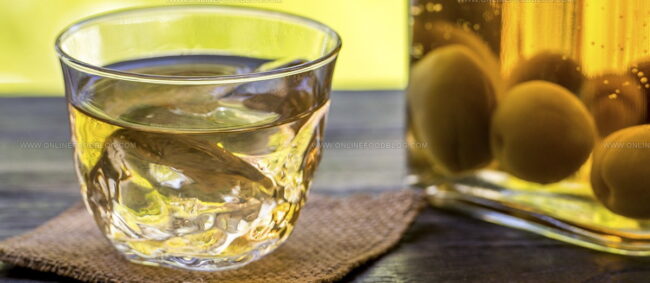
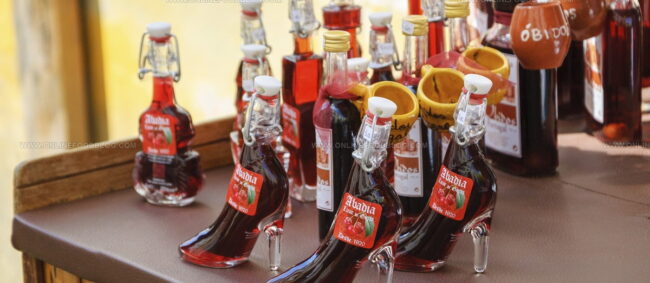
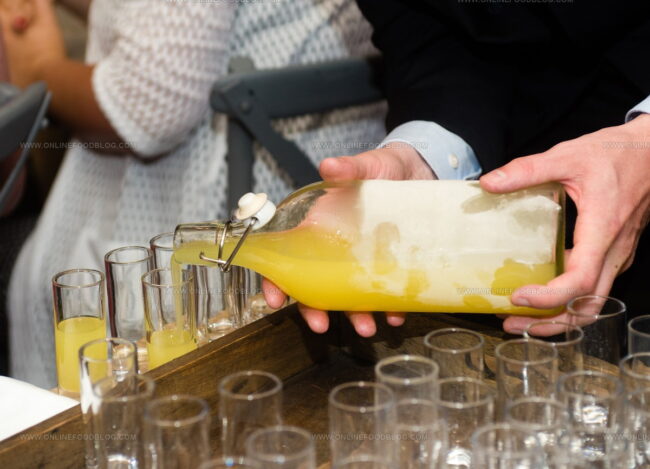
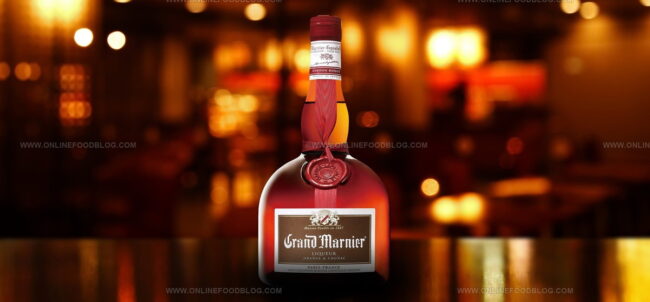
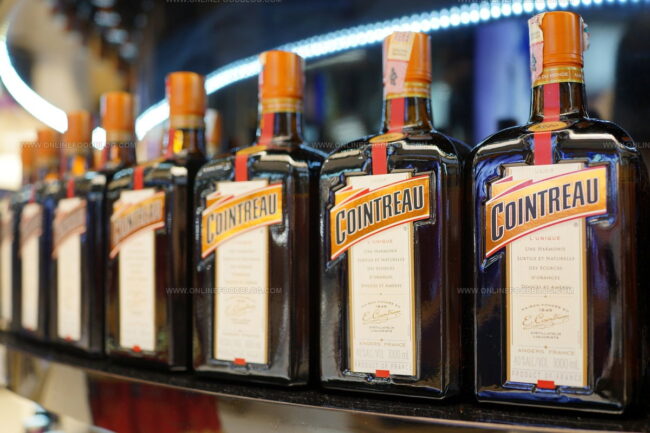
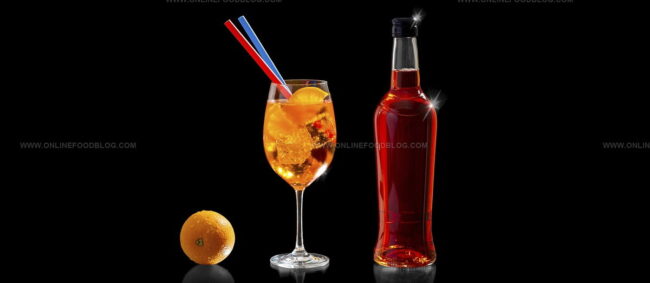
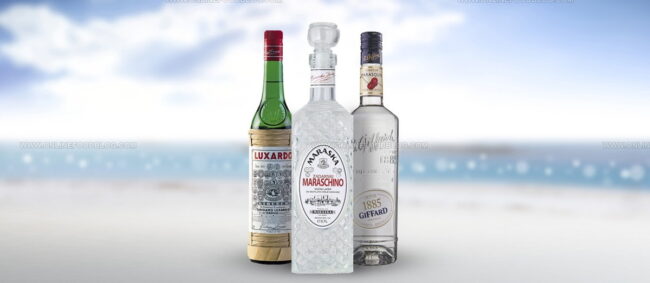
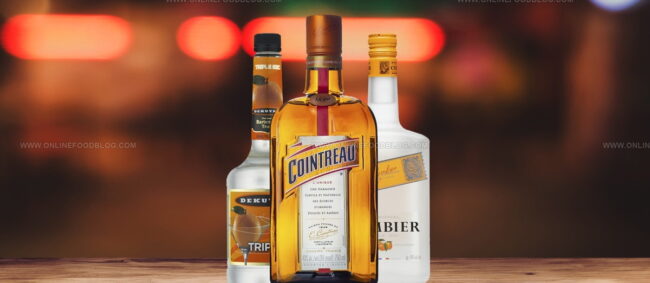
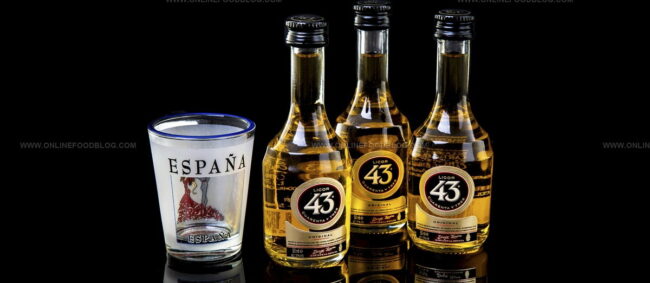

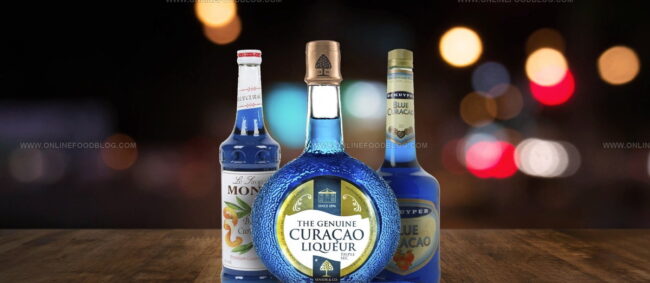
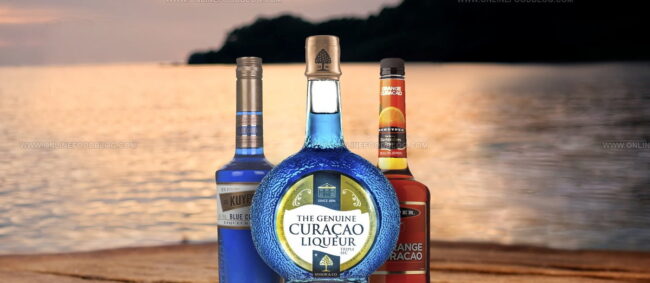
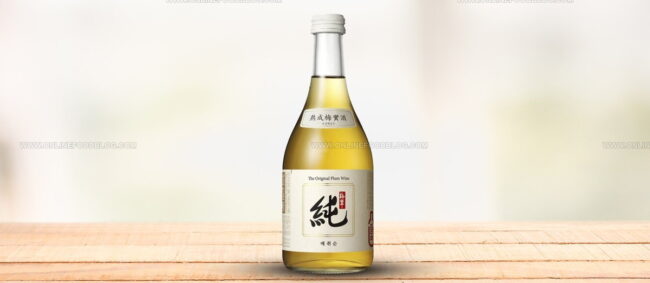



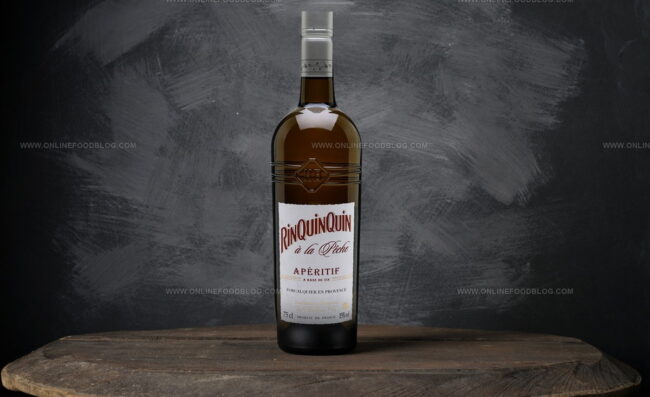
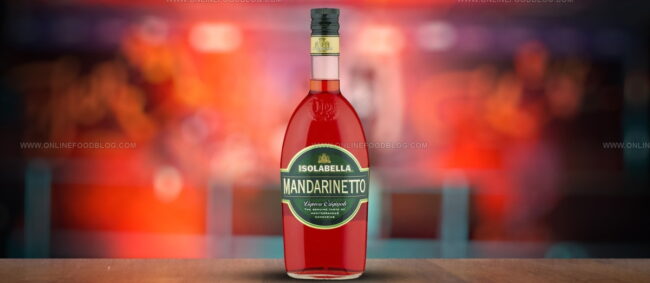



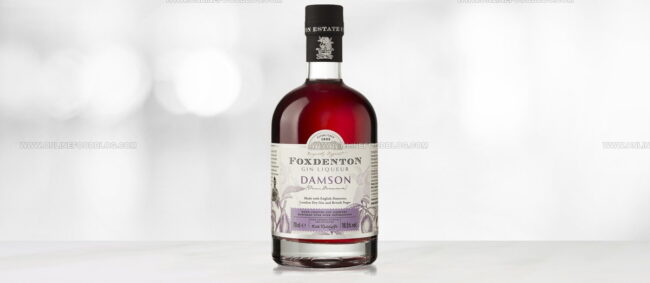


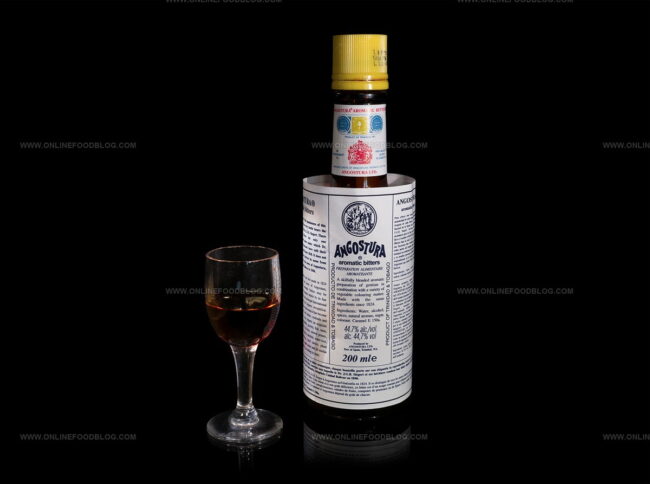
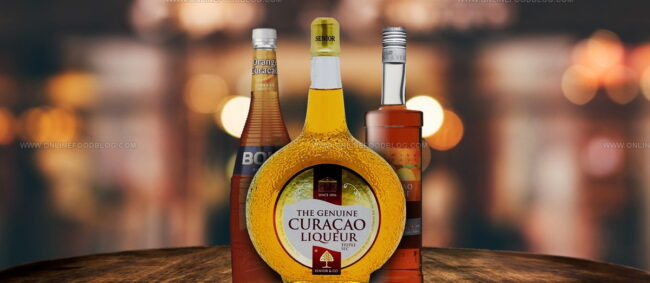



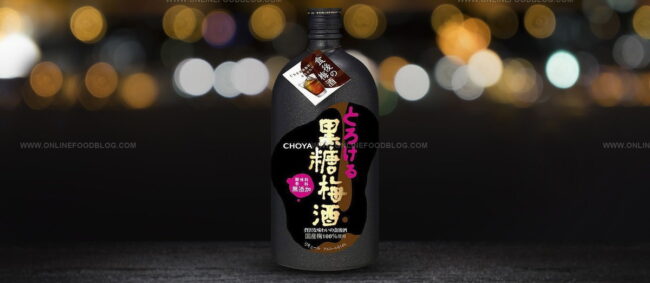
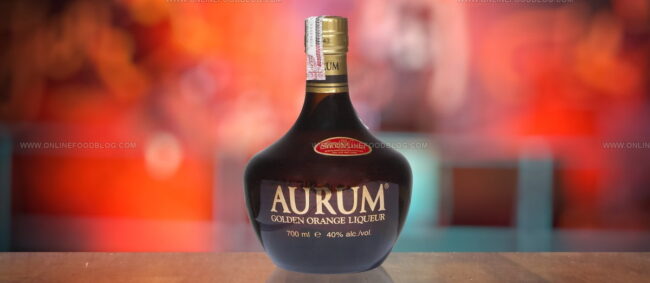
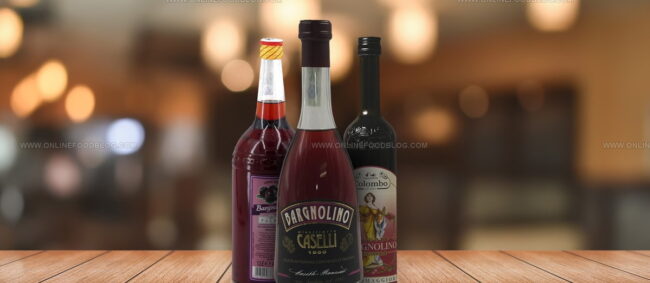

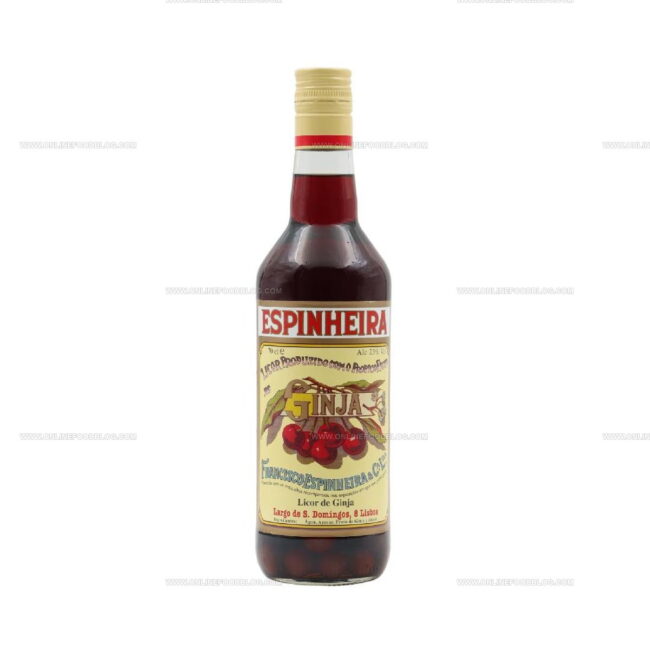
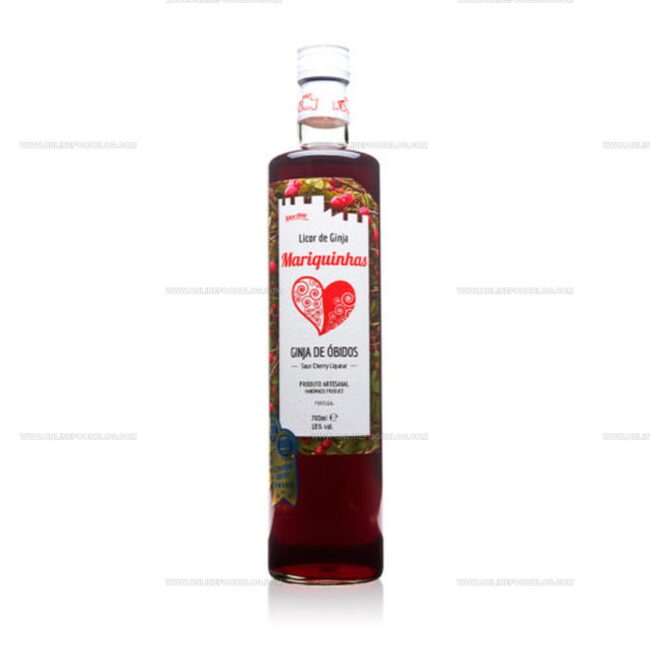
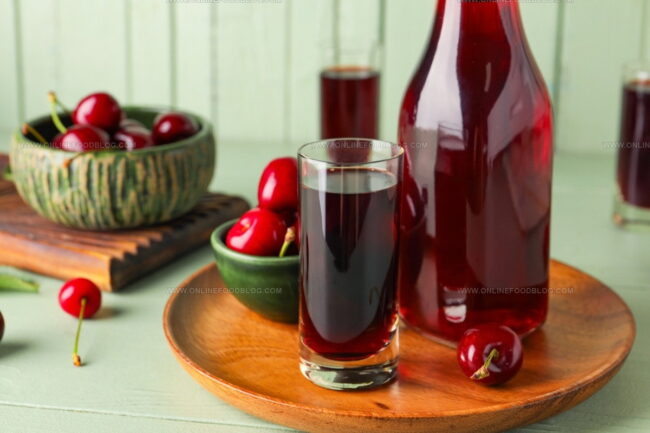
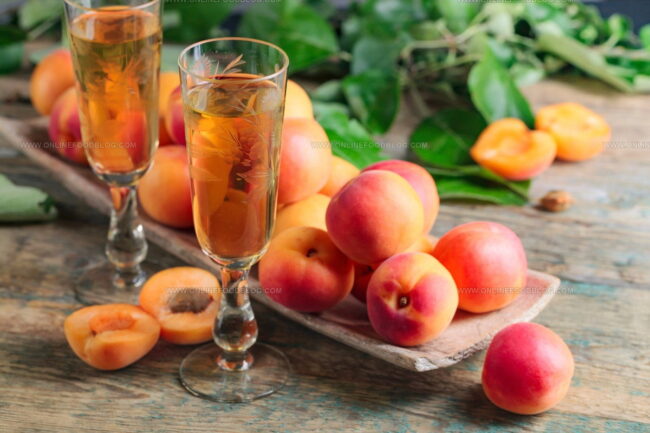
Lucas Bennett
Founder & Recipe Creator
Expertise
Simple Everyday Recipes, Sustainable Cooking Practices, Creative Meal Planning, Recipe Testing and Improvement
Education
Fox Valley Technical College, Appleton, Wisconsin
Lake Superior College, Duluth, Minnesota
Lucas Bennett’s cooking journey started in his parents’ kitchen, where he learned to prepare tasty, no-fuss meals from scratch. His culinary passion led him to Fox Valley Technical College, where he gained practical cooking skills.
He then expanded his focus on sustainability at Lake Superior College. Today, Lucas shares easy, approachable recipes designed to make cooking enjoyable and stress-free for everyone.